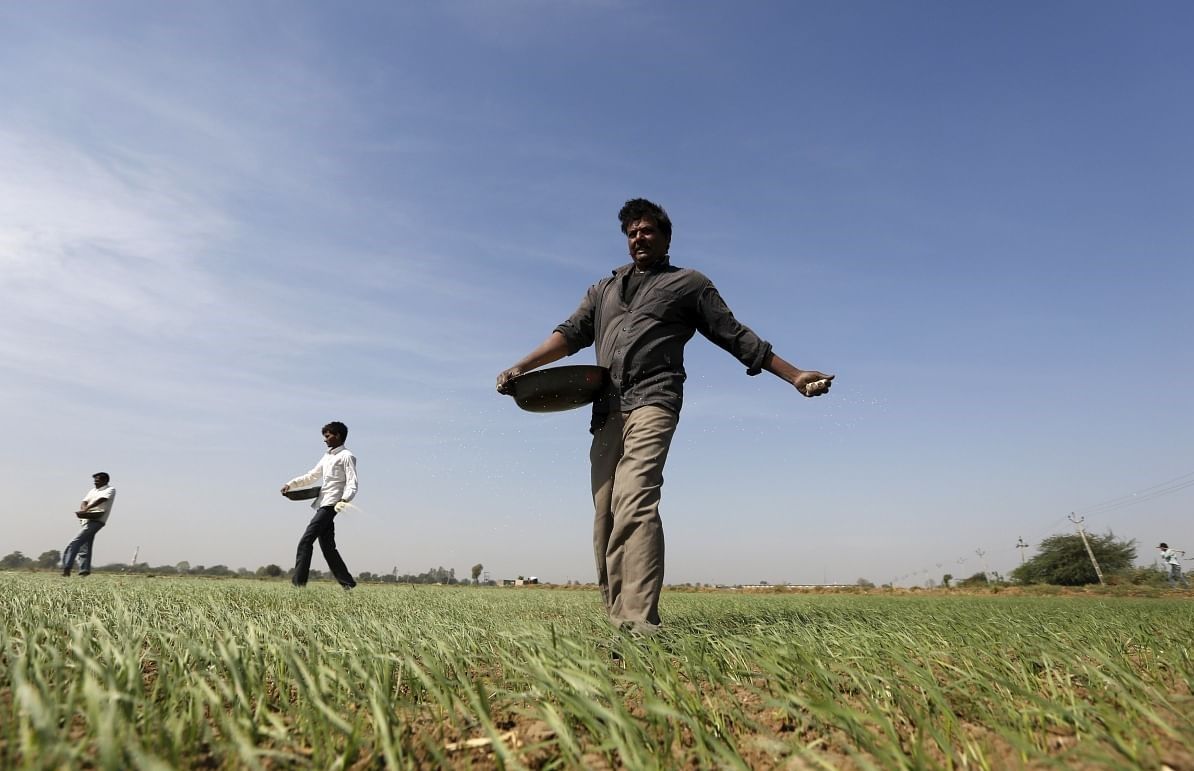
Image: PTI
New Delhi: The number of farmers who received funds under the Union government’s Prime Minister Kisan Samman Nidhi (PM-KISAN) scheme has fallen by two-thirds from the scheme’s launch in 2019 till the 11th instalment, disbursed in May-June of this year, 2022, the Union Agriculture Ministry has admitted in response to a Right to Information (RTI) inquiry. The RTI query was posted by activist Kanhaiya Kumar.
A flagship scheme of the Modi regime, the PM-KISAN was launched in February 2019 just before the Lok Sabha elections that year under which the Union government would then transfer three instalments of Rs 2,000 to all eligible farmers. This was also used in the campaign to speak of the merits of direct transfer These funds were sent from the Union government straight into the bank accounts of the farmers through Direct Benefit Transfer (DBT).
After the 2019 elections, the scheme was extended to all farmers in the country, irrespective of the size of their landholdings.
According to a report in the Hindu, while 11.84 crore farmers received the first instalment under the scheme in February 2019, only 3.87 crore farmers received the 11th instalment in May-June of this year.
This revealing figure was revealed by the Union Agriculture Ministry in response to an RTI inquiry filed by activist Kanhaiya Kumar and does not include data for the 12th instalment under the scheme, disbursed in October of this year (2022).
The newspaper’s report also observed that this decreasing trend began from the sixth instalment under the scheme, disbursed in late 2020. Only 9.87 crore farmers received the sixth instalment of funds and this figure continued to decline, going to 9.30 crore farmers (seventh instalment), 8.59 crore (eighth), 7.66 crore (ninth) and 6.34 crore (10th). So, between propaganda and fact there has been a vast gap.
State-wise decrease
The Hindu report further details the decrease in the number of beneficiaries under the scheme in 22 states in India. The full list, as well as the percentage decrease in number of beneficiaries, is presented below.
State | 1st instalment (in Lakhs) | 11th instalment (in Lakhs) | % decline |
Andhra Pradesh | 55.68 | 28.2 | 49.35 |
Bihar | 83.38 | 6.83 | 91.81 |
Chhattisgarh | 37.7 | 2 | 94.69 |
Gujarat | 63.13 | 28.41 | 55.00 |
Haryana | 19.73 | 11.59 | 41.26 |
Maharashtra | 109.98 | 37.51 | 65.89 |
Madhya Pradesh | 88.63 | 0.12 | 99.86 |
Meghalaya | 1.95 | 0.0063 | 99.68 |
Punjab | 23.34 | 11.31 | 51.54 |
Uttar Pradesh | 206 | 126 | 38.83 |
West Bengal | 45.63 | 0 | 100.00 |
Assam | 28.79 | 2.54 | 91.18 |
Delhi | 0.17 | 0.027 | 84.12 |
Himachal Pradesh | 9.86 | 5.43 | 44.93 |
Jammu and Kashmir | 12.07 | 5.61 | 53.52 |
Jharkhand | 27.07 | 4.17 | 84.60 |
Karnataka | 55.61 | 2.58 | 95.36 |
Kerala | 36.99 | 24.23 | 34.50 |
Odisha | 39.2 | 7.05 | 82.02 |
Tamil Nadu | 46.8 | 23.04 | 50.77 |
Telangana | 39.1 | 24.32 | 37.80 |
Data from the Hindu.
Amongst the states which saw the biggest drop in the number of beneficiaries was Madhya Pradesh, where the number fell from 88.63 lakh to just 12,053, as well as Meghalaya, where the number of beneficiaries fell from 1.95 lakh for the first instalment to only 627 for the 11th, according to the data in the Hindu report. MP is a state today ruled by the Bharatiya Janata Party (BJP).
Maharashtra, with its significant 1.09 crore first instalment beneficiaries, registered a drop of 65.89% to just 37.51 lakh beneficiaries of the 11th instalment, as did Punjab, a key state for farmers, which saw the number of beneficiaries fall from 23.34 lakh to 11.31 lakh between the two instalments in question.
In Gujarat, a state that goes to the polls in early December, the number of beneficiaries dropped by 55% from 63.13 lakh to 28.41 lakh from the first instalment to the 11th. However, in the campaign, even by a desultory opposition this does not seem to be an issue.
Significantly, the data in the Union Agriculture Ministry’s RTI response with regards to West Bengal is unclear. West Bengal farmers reportedly did not receive any funds until the eighth instalment of the scheme in May 2021 due to a disagreement between the Mamata Banerjee-led TMC state government and the Union government with regards to a number of features of the scheme, such as the verification of beneficiaries and the demand of the state government for the funds to be routed through it rather than disbursed through DBT.
The RTI response – and the Hindu report – however, put the number of beneficiaries of the first instalment in the state at 45.63 lakh and notes that since the sixth instalment, no farmer in Bengal has received funds under the scheme.
This fact, matches a claim made by agriculture minister Narendra Singh Tomar in a written reply in the Lok Sabha earlier this year.
The decline in the number of beneficiaries of the PM-KISAN scheme has drawn allegations from Ashok Dhawale, president of the All India Kisan Sabha, that the Union government is trying to quietly do away with the direct fund transfer scheme, telling the Hindu, “This scheme was another jumla to skirt the real issues the farmers are facing.”
Related:
Did the Rs. 2000 dole to the farmers help BJP win in MP and Rajasthan?